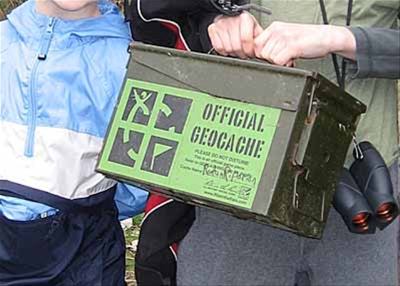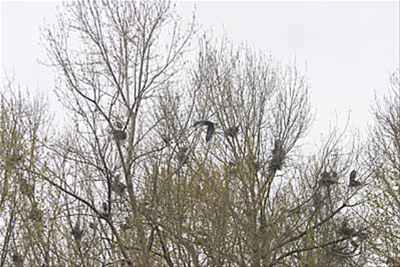Last weekend, Andrew (9), Michael (6), and I had a grand ol' time geocaching in a park in Renton (a suburb on the south end of Lake Washington). We even found the cache this time (not always the case, unfortunately).

First, a little about geocaching for the uninitiated. Geocaching is a game where people hide caches and then list the coordinates on Geocaching.com. More often, there are multiple sets of coordinates, each leading to a clue that plays into a subsequent set of coordinates. Seekers then use their GPS' to work through the coordinates/clues until they find the cache. The caches vary, but they're usually some container with a logbook and some trinkets (the boys each picked up a small toy in this last one.) The guys (and I) love geocaching because it's a treasure hunt; it adds a lot of dimension to our hikes. It's a good excuse to play with gadgets too...

Anyway, the park where we geocached is the Black River Riparian Forest; the unique thing about this park (other than the fact the Black River has been gone for the almost ninety years since the Montlake Cut lowered the water level of Lake Washington) is that it's home to a huge heron colony, one of the biggest in Washington. As you can see from the photo, the trees are filled with heron nests. I understand they've laid their eggs already; the ones that survive predation from the bald eagles that have taken up residence very near by (we could easily the eagles' nest) will hatch in a few weeks. I want to come back then and see the hatchlings learn to fly. It was pretty cool even now.
A few tips if you go:
- Bring binoculars. The viewing area is across a creek, so you need magnification if you want to see anything.
- Bring a loooong lens. If you're planning on taking photos, you'll need a lot of reach. I had my 70-200 2.8 with a 1.4x tele and didn't have nearly enough reach to get a good shot. I don't think 500mm with an extender would be crazy. Compounding the difficulty, the birds move quickly and its often overcast here. High ISO, fast shutters, and stabilization are key. I was shooting on my monopod, which was good. There was a guy using a tripod next to me, but he seemed to be having problems tracking flying birds. Much easier on the monopod.
- <spoiler warning>The geocaching clue tells you to count the number of nests and work that into the equation. While I was busy getting frustrated counting the nests through the binoculars, Andrew noticed the value canceled out in the clue (you added it at the beginning and subtracted it back out at the end). Good thing one of us can do math.
If you're interested in trying to find this cache, it's GC5602 on Geocaching.com.
Leave a comment